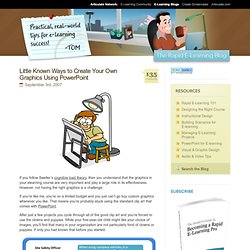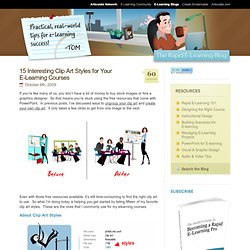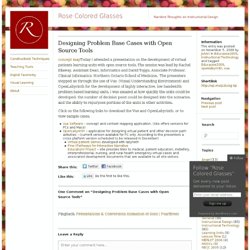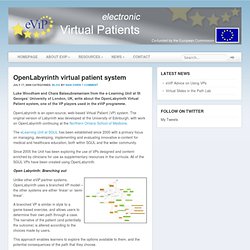

Guide : les applications pédagogiques de Twitter. Les applications pédagogiques de Twitter (en pdf, 17 pages) est un dossier de Michèle Deschênes (enseignante en techniques d’intégration web) et Séverine Parent (conseillère pédagogique TIC) publié au Québec en février 2012 via le portail professionnel de l’éducation ProfWeb.qc.ca.

Ce guide s’intéresse à l’utilisation de Twitter dans un cadre pédagogique : pour la classe, l’apprentissage et plus largement il peut correspondre à des situations de formation notamment en espaces publics numériques. Twitter est-il service en ligne pertinent à intégrer dans des séquences de compréhension, d’acquisition de connaissances et de compétences, d’interactions entre des personnes ? 11 Free Mind Mapping Applications & Web Services - Stepcase Lifehack.
Mind mapping is a way of taking notes, capturing ideas, exploring concepts and breaking down information into a more readily understood format.

It’s a place where visual representations and written representations of things merge to create something that is more natural to the mind; it works with and represents the way we think, where as paragraph-based text is not representative of the thought process at all. There are a million and one uses for mind mapping. You can use it to study for a big exam. You can use it brainstorm new article ideas, or flesh out what needs to be covered in the business plan for a new venture. You can organize a big move of house; heck, I’ve seen people use the mind map format for their daily to-do lists (each to their own, eh?). There are huge advantages to creating your mind maps with paper and pen. Bubble.us is a free web-based mind mapping application. 5 PowerPoint Tips. Little Known Ways to Create Your Own Graphics Using PowerPoint » If you follow Sweller’s cognitive load theory, then you understand that the graphics in your elearning course are very important and play a large role in its effectiveness.

However, not having the right graphics is a challenge. If you’re like me, you’re on a limited budget and you just can’t go buy custom graphics whenever you like. That means you’re probably stuck using the standard clip art that comes with PowerPoint. After just a few projects you cycle through all of the good clip art and you’re forced to use the clowns and puppies. While your five-year-old child might like your choice of images, you’ll find that many in your organization are not particularly fond of clowns or puppies. How Do I Get the Graphics I Need? 15 Interesting Clip Art Styles for Your E-Learning Courses » The. If you’re like many of us, you don’t have a lot of money to buy stock images or hire a graphics designer.

So that means you’re stuck using the free resources that come with PowerPoint. In previous posts, I’ve discussed ways to ungroup your clip art and create your own clip art. It only takes a few clicks to get from one image to the next. Even with those free resources available, it’s still time-consuming to find the right clip art to use. So what I’m doing today is helping you get started by listing fifteen of my favorite clip art styles.
Designing Problem Base Cases with Open Source Tools. Today I attended a presentation on the development of virtual patients learning units with open source tools.

The session was lead by Rachel Ellaway, Assistant Dean, Informatics and David Topps, Associate Professor, Clinical Informatics, Northern Ontario School of Medicine. The presenters stepped us through the use of Vue (Visual Understanding Environment) and OpenLabyrinth for the development of highly interactive, low bandwidth problem based learning units. I was amazed at how quickly the units could be developed; the number of decision point could be designed into the scenarios, and the ability to repurpose portions of the units in other activities.
Click on the following links to download the Vue and OpenLabyrinth, or to view sample cases. Vue Software – concept and content mapping application. Like this: Like Loading... VUE. Visual Understanding Environment. Chaîne de VUEProject. How to Use Ontologies in VUE. Free Home & Education software downloads. Reviews for OpenLabyrinth. OpenLabyrinth virtual patient system. Luke Woodham and Chara Balasubramaniam from the e-Learning Unit at St Georges’ University of London, UK, write about the OpenLabyrinth Virtual Patient system, one of the VP players used in the eViP programme.

OpenLabyrinth is an open-source, web-based Virtual Patient (VP) system. The original version of Labyrinth was developed at the University of Edinburgh, with work on OpenLabyrinth continuing at the Northern Ontario School of Medicine. The eLearning Unit at SGUL has been established since 2000 with a primary focus on managing, developing, implementing and evaluating innovative e-content for medical and healthcare education, both within SGUL and the wider community. Since 2005 the Unit has been exploring the use of VPs designed and content-enriched by clinicians for use as supplementary resources in the curricula. All of the SGUL VPs have been created using OpenLabyrinth.
Open Labyrinth: Branching out Enhanced content, enhanced experience. eViP Electronic Virtual Patients.